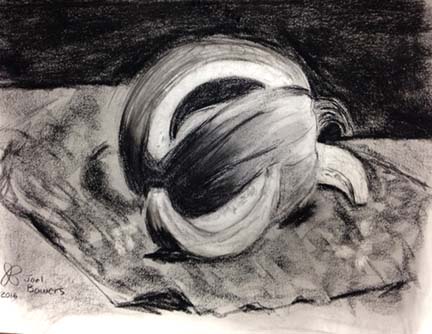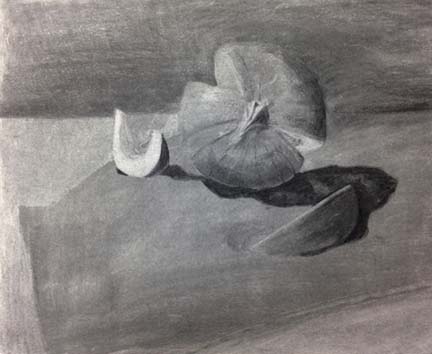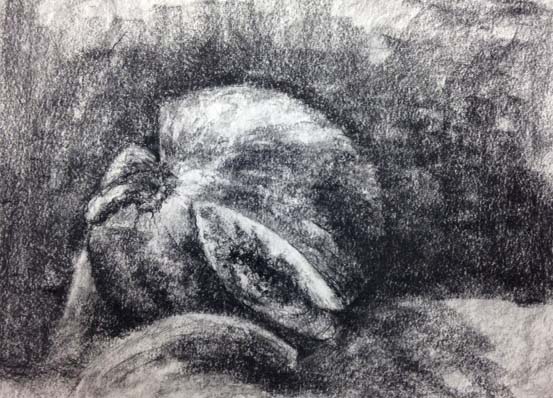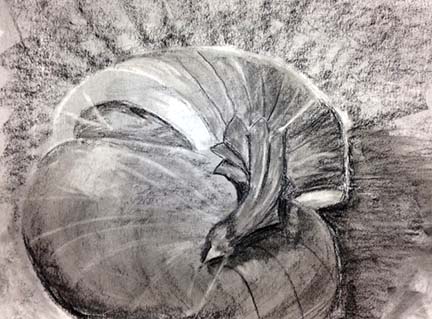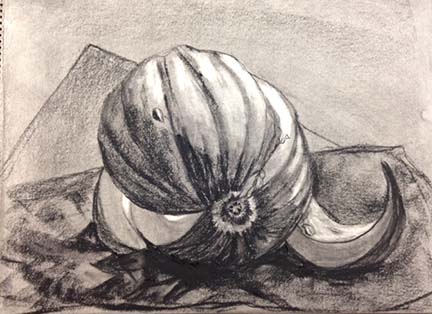Paul Cezanne gave sound advice when he urged artists to " get to the heart of what is before you and continue to express yourself as logically as possible."
A LESSON IN -- Logic of light
For two weeks we have observed the effects of light and shadow on round forms-- a styrofoam ball, gords and a pumpkin. Each form was a little more complex than the last. We turned on the lamp and studied the basic elements that make up the pattern of light and shadow on a form-- core shadow, reflected light, cast shadow, transition line, highlight. Student's translated what they saw using a limited value range. Too many values used to define a shadow often results in a drawing that lacks the feeling of volume. If this is the effect you are after, then breaking up your shadow into many value shapes is just the way to do it! But, if you want your drawing to have a feeling of light on form in space, learning to unify your values is a necessary tool.
The advantage of learning this light & shadow pattern is it gives you a basis for understanding, for observing. First simplify what you see-- be true to the shapes that define each part of the shadow or light, but not necessarily the value. Being too literal about the value does not always work into the logic of the drawing. Remember what you are doing-- creating an illusion of 3D reality onto a 2D surface!
Results from week 2
This week in class we cut open the pumpkin and made drawings from the results! Students created each drawing below by-- first considering what they believed was the most interesting part, and then using a limited value range to define and unite parts. It is amazing how much student's improved working on the same concept for two weeks in a row. Just look at these drawings!

